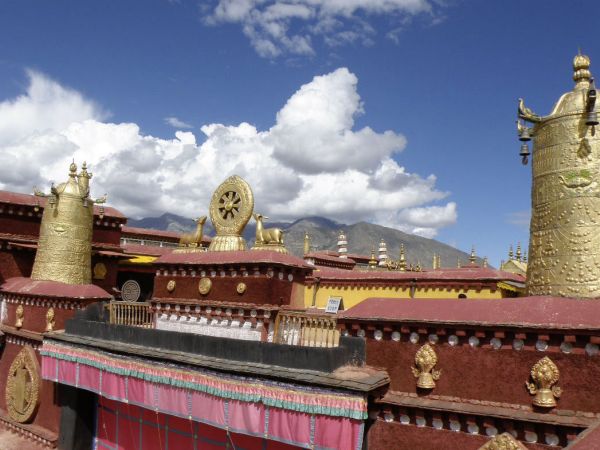The Top 10 Temples & Monasteries in China
There are many temples in China, it is difficult to list them all, but we have collected the ten most famous temples in China for you. Almost all of them are temples with a thousand-year history. Buddhism was first introduced to China during the Han Dynasty, and it was at that time that China began to have these types of religious buildings.
1.Lingyin Temple
Lingyin Temple is a must-see for many visiting Hangzhou, and is best known for the story of Ji Gong. It is said that Ji Gong was ordained here, and to this day, the Lingyin Temple still preserves the Ji Gong Hall.
Lingyin Temple was first built in the third year of the Dongjin Xianhe Dynasty (328 AD) and has a history of more than sixteen hundred years to date. Back then, the Indian monk Hui Li came to Hangzhou and seeing the beauty of the mountains here, he considered it a place of "concealment of the divine", so he decided to build a temple here and named it "Lingyin". In 1689, Emperor Kangxi toured the south and named it "Chan Yunlin Temple".
Nowadays, Lingyin Temple is very popular and is full of worshipers who come here every day. It is said to be quite miraculous, is that why there are so many people?
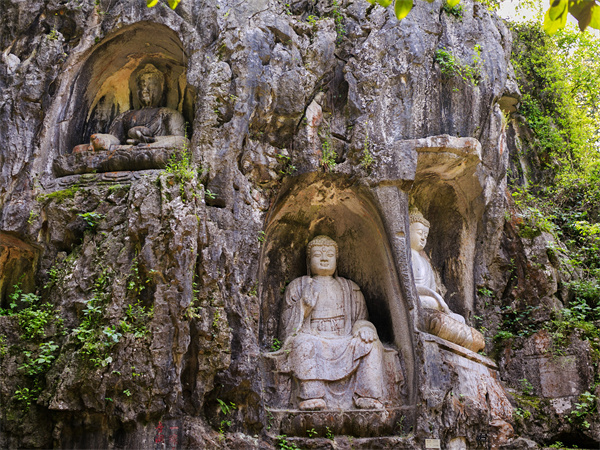
2.The Temple of the White Horse
The White Horse Temple is the first ancient monastery in China, founded in 68 AD, and has a history of more than nineteen hundred years to this day.
Where does the name Caballo Blanco come from? In 64 AD, the Ming Emperor of Han, Liu Zhuang, dreamed of men of gold, so he sent emissaries to Central Asia to seek Buddhist teachings, marking the first trip to the West in Chinese history. Three years later, these emissaries returned with an Indian monk carrying sutras and Buddha statues on a white horse, and Emperor Ming received them personally. The following year, a monastery was built here to commemorate the merit of the white horse that carried the sutras, and was called the White Horse Temple. After the founding of the White Horse Temple, "monasteries" in China began to be called "temples", and the White Horse Temple is considered the birthplace of Chinese Buddhism.
The tombs of the two monks who brought the sutras are said to still be inside the temple, and this place is also frequently visited by scholars studying East Asian history.
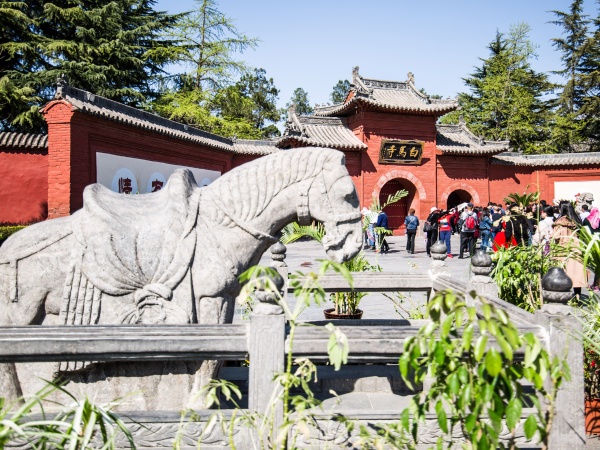
3.The Shaolin Temple
The Shaolin Temple, the birthplace of Chinese Kung Fu, is known to almost everyone in China. Due to its great reputation, many children and young people come here to learn martial arts.
In the 19th year of the Taihe period of the Northern Wei Dynasty (AD 495), Emperor Xiaowen ordered the construction of the Shaolin Temple on the northern slope of Mount Songshan in Shaoshi County. It is said that there is also a story between the Shaolin Temple and Li Shimin, did you know that thirteen expert monks saved the Tang king Li Shimin from the defeat of the Zheng army? However, some question whether this is true.

4.Longhua Temple
Longhua Temple is the oldest and largest monastery in the Shanghai region. It dates back to the time of the Eastern Wu Kingdom during the Three Kingdoms, and was formally established during the Tang Dynasty, reaching a certain scale as a temple.
During the Eastern Wu Kingdom during the Three Kingdoms, the Central Asian monk Kang Senghui came from Jiaozhi (northern Vietnam) to Jianye (Nanjing). Kang Senghui preached Buddhism to Sun Quan, and according to legend, he obtained thirteen Buddha relics through burning incense and praying. King Wu was overjoyed and ordered the construction of thirteen pagodas, Longhua Tower being one of them.
Another version says that during the Three Kingdoms, Sun Quan of Eastern Wu built the temple in the fifth year of the Chiwu Kingdom in honor of his mother, and named it Longhua Temple according to the record in Buddhist sutras that Maitreya Buddha became enlightened under a Longhua tree.
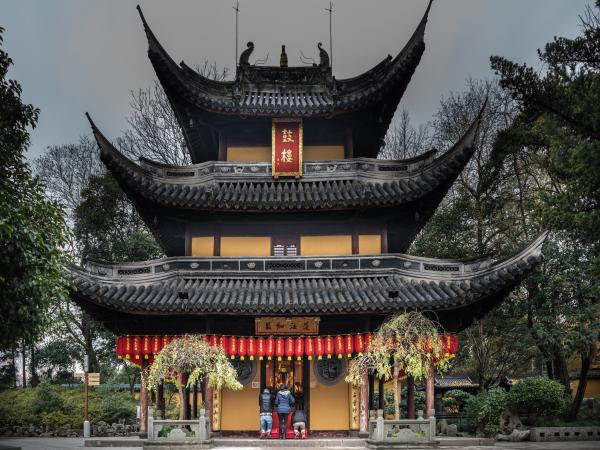
5.The Great Ming Monastery
The Great Ming Monastery is located on the northwestern outskirts of Yangzhou City and was first built during the reign of Emperor Xiao Wu of the Southern Song Dynasty (457-464 AD), which is why it is called "Great Monastery." Ming." The Great Ming Monastery became famous throughout the country for the transmission of Buddhist law to Japan by the great Zen master Jianzhen within the monastery. In the first year of Tianbao of the Tang Dynasty (742 AD), Grandmaster Jianzhen of the Great Ming Monastery, responding to the invitation of Japanese monks, planned to transmit Buddhist law to Japan, and after ten years of difficulties and five Attempts failed, he finally succeeded in the twelfth year of Tianbao of the Tang Dynasty (753 AD).
In front of the Great Ming Monastery, there is a tall and ancient arch with the inscription "Spirit Resting Place", because inside the monastery there is a nine-story tower called "Spirit Resting Tower". This tower is famous throughout the region, and famous poets of the Tang Dynasty such as Li Bai, Gao Shi, Bai Juyi and Liu Yuxi have come here to compose poems, making it a famous story. In the fifth year of Huichang of the Tang Dynasty (845 AD), the tower was burned and destroyed, and this place became the resting place of the spirit.

6.The Great Ci'en Monastery
Xi'an Ci'en Monastery is also a famous monastery in Chinese history. The eminent monk Tang Xuanzang was ordained by the imperial court and spent more than ten years translating Buddhist sutras here, making it a famous place for sutra translation in ancient Chang'an. Do you know why this monastery is called that?
Ci'en Monastery is located on the southern outskirts of Xi'an and is the most magnificent Buddhist monastery of the Tang Dynasty. It was built in the twenty-second year of the Zhenguan era of Emperor Taizong of the Tang Dynasty (648 AD) in memory of Prince Li Zhi's kind mother, and is therefore called "Ci'en Monastery".

7.The Great Xiangguo Temple
Readers of "Water Margin" know the story of Lu Zhihuai, who pulled a weeping willow in the Great Xiangguo Temple. Great Xiangguo Temple was built in the 6th Tianbao year of the Bei Qi Dynasty (555 AD), originally known as Jianguo Temple, which was destroyed during the war. In the year 712 of the Tang Dynasty, Emperor Ruizong, to commemorate his accession to the imperial throne, named it "Great Xiangguo Temple" and personally wrote the plaque.
During the Northern Song Dynasty, Great Xiangguo Temple was highly revered by the royal family and became a "royal temple" and the center of Buddhist activities throughout the country. After the fall of the Northern Song Dynasty, the Great Xiangguo Temple was severely damaged and was repaired and rebuilt several times over the following dynasties, experiencing periods of prosperity and decline. The current main buildings of Great Xiangguo Temple are relics of the Qing Dynasty.

8.Dabeichanyuan Grand Monastery
Dabeichanyuan Grand Monastery, also known as Dabeiyuan, is the only Buddhist monastery in Tianjin today. It cannot be determined with certainty when it was first built, but according to historical records, it was founded during the Ming Dynasty and rebuilt during the Qing Dynasty.
The monastery gets its name because its main hall worships Avalokitesvara Bodhisattva, who is also known as the Great Bodhisattva of Compassion. Therefore, the monastery is called "Great Mercy." In the Main Hall of the monastery is the ancient gilded bronze statue of Shakyamuni, dating back to the Ming Dynasty. The bronze statue is 5.2 meters high and the golden lotus pedestal weighs 6 tons, with 9999 small bronze statues placed on it.
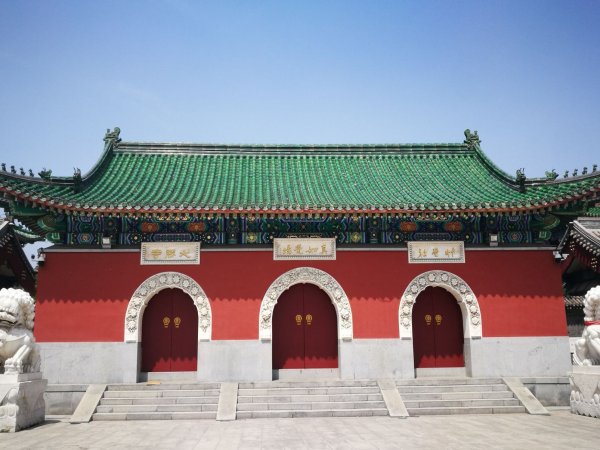
9.The Great Jokhang Temple
The Jokhang Great Temple was built in the 21st year of the Zhenguan era of the Tang Dynasty. The main statue of Shakyamuni Buddha in the temple was brought by Princess Wencheng when entering Tibet, and has a supremely high position in the world of Buddhism. The fact that Lhasa has the reputation of being a "holy land" is related to this Buddha statue. The Jokhang Great Temple was initially called "Rasa", then Rasa became the name of the city and evolved into today's "Lhasa".
There are only three life-size statues of the Buddha in the world. The founder of Buddhism, Shakyamuni, opposed idol worship and did not allow the construction of temples with images. On his deathbed, Shakyamuni only consented to have images made of himself at the ages of three different times in his life, and he himself drew the designs for these images. Of these three statues of the Buddha, the most exquisite and revered is the gilded bronze statue of Shakyamuni as a prince at age twelve. This Buddha statue came to China from ancient India, and was then brought to Tibet by Princess Wencheng during the Tang Dynasty, where it was originally placed in the Jokhang Temple. The gilded bronze statue of Shakyamuni at the age of eight, which is the main statue in the Jokhang Temple, was originally located in the Great Jokhang Temple, and is one of these three precious statues of the Buddha.
